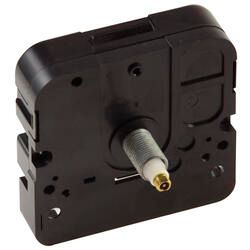Clock Movements Suppliers
Continuous Sweep Clock Movements Offer Alternatives

Clock movements with continual move second hands are an intriguing option to the kind that "tick" the hand in a step motion. Continual move clock movements are not constantly the most noticeable selection from a supplier, and also there may not be as huge an option of features as you get with conventional movements. Yet they deserve your while to explore, and also this post supplies some history right into their workings and background.
Continual move clock movements were not also possible to recognize up until the standard, mechanical engines paved the way to digital ones. Actually, the familiar ticking, jerky, step motion of conventional second hands is a straight outcome of how mechanical clocks were designed.
To see this, allow's delve into how mechanical clock electric motors worked. Hanging weights (assume cuckoo clock) or coiled springtimes (assume wristwatch) applied a rotational pressure on a freestanding flywheel, making it inclined to transform. A network of intermeshed gears attached to the flywheel resulted in hand-shaft turnings at ordered prices (seconds, minutes, as well as hours).
To stop the gears from rotating at breakneck speed, some bright person presented a pendulum right into the system as a type of regulatory authority. It ends up that the moment it considers the pendulum to swing completely across and also back (called its period) is established almost exclusively by the size of its rod. Nonetheless, if the pendulum amplitude (the variety of levels subtended by a full swing of the bob) is too great (more than 6 ° or so), it also becomes an element, slowing the duration down.
In extreme cases the timepiece could shed minutes daily. The technique then was to restrict a pendulum's amplitude without impacting the length of its pole. This was accomplished with the introduction of one more innovation, the support escapement, which constrained pendulum swings to between 4 ° and also 6 °. The way it works is that as the pendulum passes through the center factor of its swing, the escapement releases one tooth of what is called the escapement wheel. Therefore, in one duration, 2 teeth are launched, one for the forward swing and one for the return swing. The gearing for the clock itself advancements a set distinct quantity for every swing of the pendulum, and also the hands likewise advance appropriately.
In practice, the pendulum's length is determined so as to have the used breakthrough one setting every second. Really, it advances one-half a second for each released escapement wheel tooth, causing an action movement of the hand and also accompanied by a "tick-tock" sound. Simply put, the activity of the second hand is by no means constant yet type of jerky.
In contemporary times clock movements are not mechanical however electronic. Instead of weights applying a rotational force on a flywheel, an electronic pressure creates a quartz crystal to send out pulses of power at a high as well as extremely precise powerful regularity. Instead of a ratio of gears mapping out angular rates for hour, min, and also pre-owneds, electronic signs up collect a running matter of the pulses sent out by the crystal and activate an occasion when a threshold is crossed.
The practice has actually primarily been to maintain the status quo in terms of actions, reproducing the hand action activity of the old mechanical clocks. Nevertheless, the action activity was a needed artefact of the pendulum-and-escapement style; it does not have to be replicated by electronic movements. Software identifies whether the pre-owned angular setting is upgraded with a jerk as soon as every second or is converted instantly and also constantly.
So getting a continual sweep second hand is merely an issue of getting a movement that uses different software. Keep in mind that hr hand movement, as well as generally minute hand activity, has constantly been continuous instead of action, at least for analog wrist watches. (Digital user interfaces utilize step changes for secs, minutes, and hrs, necessarily.).
Once again, all the various movement feature establishes supplied by vendors may not be readily available in a constant move second hand variation. We do understand that you can obtain the move effect in a high torque motion for large-diameter wrist watches. Yet it's nice to know that constant sweep clock movements offer much-desired alternatives to clockmakers.

